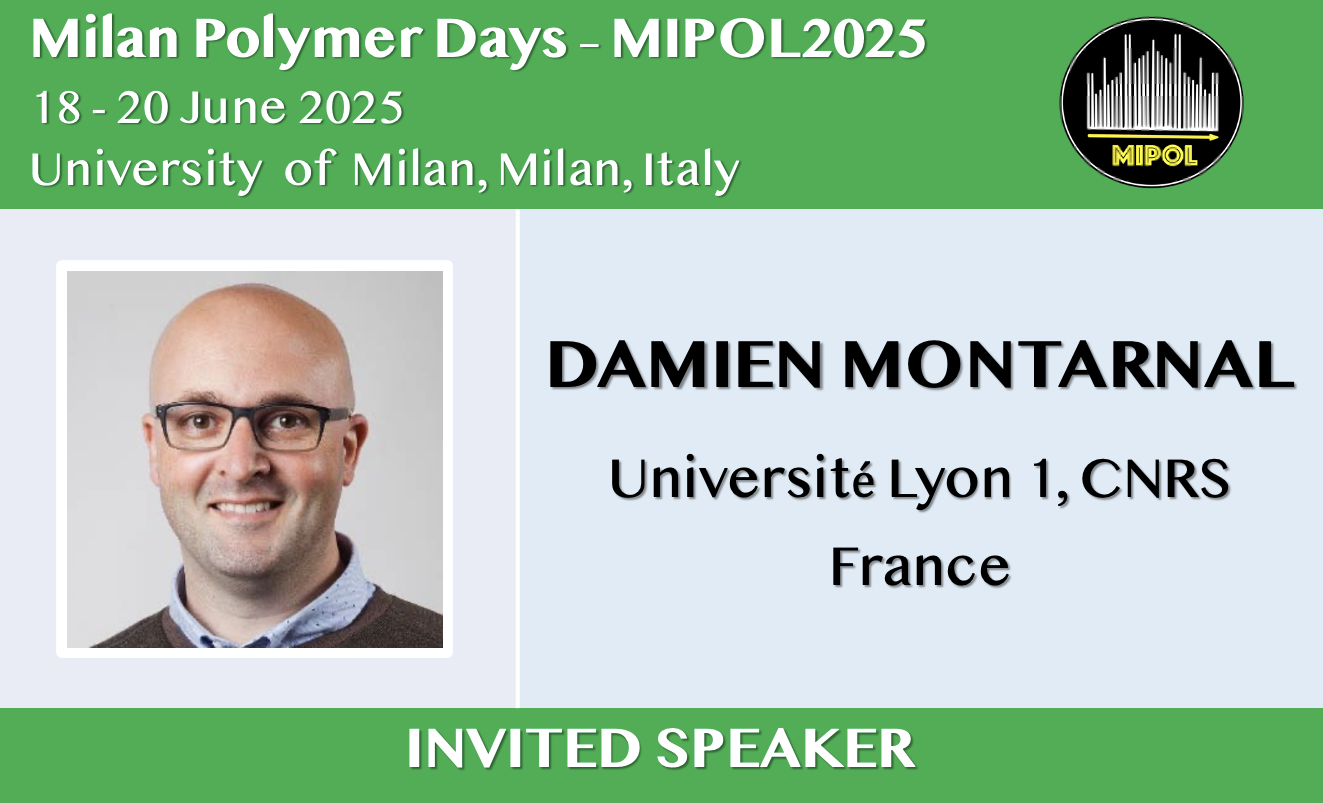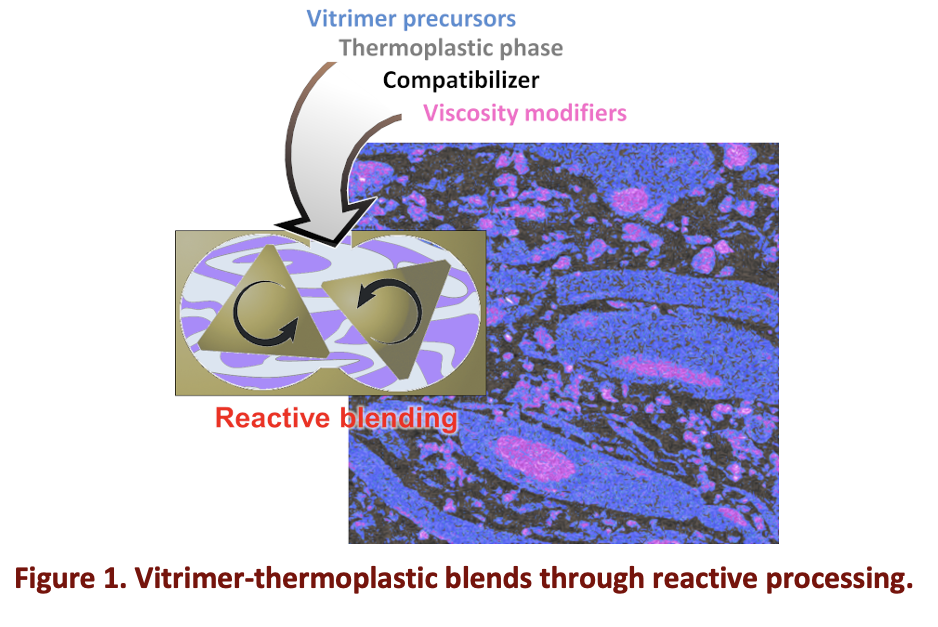Improving high shear processability of dynamic covalent networks
Abstract

Vitrimers aim at incorporating in polymer networks dynamic covalent crosslinks governed by associative, exchangeable reactions [1]. At high temperatures or in the presence of catalysts, chemical equilibria enable large scale reorganisation and stress relaxation of the network, and thus plastic deformation and reprocessing/welding of the sample. This versatile concept has been applied to different polymer systems by taking advantage of a variety of equilibrated reactions [2,3]. Current syntheses and processing of vitrimers are strongly focused on thermosetting formulations, i.e. liquid precursors cured into a dynamic crosslinked network, or modification and functionalization of thermoplastics in the melt.
We will discuss the challenges encountered during (re)processing of vitrimers, and in particular the difficult compromises between creep resistance at service temperature, and fast processing at high throughputs. We will illustrate recent promising strategies, and in particular our recent success in the formation of phase separated blends between a vitrimer phase and a thermoplastic phase by reactive processing [4]. A dynamically cross-linked percolating vitrimer network can be obtained, that demonstrates yield stress properties and can be reversibly disrupted at high shear. This blending strategy enabled in particular to upscale the production of vitrimer/PP blends to conventional industrial production equipment and correspondingly to conventional processing tools (injection press, 3D printing).

References
- D. Montarnal, M. Capelot, F. Tournilhac, L. Leibler Science 2011, 334, 965.
- M. Guerre, C. Taplan, J. M. Winne, F. E. Du Prez Chem. Sci. 2020, 11, 4855.
- A. Jourdain, R. Asbai, O. Anaya, M. M. Chehimi, E. Drockenmuller, D. Montarnal Macromolecules 2020, 53, 1884.
- L. M. A. Joosten, P. Cassagnau, E. Drockenmuller, D. Montarnal Adv. Funct. Mater. 2024, 34.
Acknowledgments
All the authors acknowledge financial support from European Union under the Horizon 2020 research and innovation program Marie-Sklodowska-Curie Grant agreement No 860911: https://www.vitrimat.eu/

